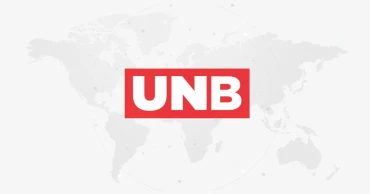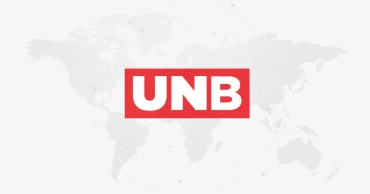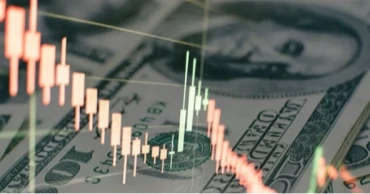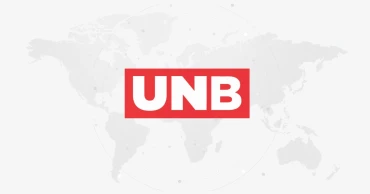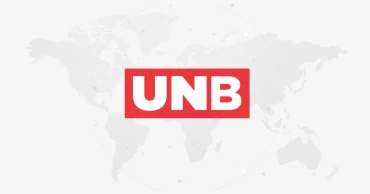foreign exchange
Bangladesh’s reserves still remain above $31 billion after ACU payment
The Bangladesh Bank has settled US$1.61 billion in import payments to the Asian Clearing Union (ACU) for September and October 2025, keeping the country's foreign exchange reserves above the $31-billion mark.
Following Sunday’s (9th November 2025) payment, the gross foreign exchange reserves now stand at $31.14 billion, higher than September’s $30.31 billion recorded after a similar $1.5 billion ACU payment.
Based on the International Monetary Fund’s (IMF) Balance of Payments and International Investment Position Manual (BPM6) methodology, the reserve currently amounts to $26.44 billion, up from $25.40 billion in September.
RCBC requested to forfeit $81m over Bangladesh Bank reserve heist
Before the latest ACU settlement, the gross reserve was $32.71 billion, while the BPM6 figure stood at $28 billion. The central bank has been publishing reserve figures under the IMF’s BPM6 system since June 2023, in line with the IMF loan conditions. At that time, the reserve was $24.75 billion.
Last week’s reserve figure of $32.71 billion was reportedly the highest in the past 32 months.
The ACU (Asian Clearing Union) is a regional payment mechanism that facilitates trade settlements among member countries every two months. Its current members are Bangladesh, Bhutan, India, Iran, the Maldives, Myanmar, Nepal, and Pakistan. Sri Lanka, a former member, withdrew amid its economic crisis and has yet to rejoin despite signs of recovery.
Bangladesh’s foreign exchange reserves had peaked at $48 billion in August 2021 but later declined steadily, dropping to around $16 billion during the final days of the previous Awami League government.
BB reserve heist review committee’s tenure extended for 3rd time
Since the government transition, tighter measures against money laundering have reduced hundi (illegal money transfer) operations, contributing to higher formal remittance inflows.
Remittances reached $10.90 billion from the start of the current fiscal year to November 8, representing a 14 percent rise compared to the same period a year earlier.
1 month ago
BB eases foreign exchange limit for July uprising victims
Bangladesh Bank (BB) has announced a relaxation in the foreign exchange release limit for those requiring medical treatment abroad due to injuries they suffered during the July uprising.
The Foreign Exchange Policy Department of the central bank issued a circular in this regard on Tuesday.
In the circular, the central bank states, “The limit of $10,000 or equivalent shall stand relaxed on account of treatment abroad for persons injured in the Students-People’s uprising - July 2024 Revolution.”
In this context, ADs (Authorised Dealers) may release foreign exchange based on estimation.
In addition to the banking channel, international card channels may be used for the transactions, it added.
BB to fix single exchange rate for US dollar soon
The circular emphasised that all other existing regulations and instructions regarding foreign exchange transactions remain unchanged.
11 months ago
Bangladesh's forex reserves reach $20bn amid rise in remittance
Bangladesh's foreign exchange reserves have surged to $20 billion, driven by an increase in remittances from overseas workers.
According to Bangladesh Bank’s spokesperson and Executive Director, Husne Ara Shikha, the current reserve, as of December 22, stands at $24.84 billion (or 2,484 million USD) based on the bank's latest data.
But the reserves are officially recorded at $20 billion in line with the International Monetary Fund's (IMF) BPM-6 accounting methodology.
Bangladesh had to accept huge Rohingyas under certain circumstances: Touhid Hossain
The reserves had reached the $20 billion mark earlier on November 6, but there was a gradual decline following that, with the reserves dipping below $19 billion during the first week of December.
Despite this dip, the inflow of remittances has provided a crucial boost to the national reserves.
During the first 21 days of December, Bangladesh received $2.07 billion in remittances, a significant rise compared to $1.575 billion and $1.572 billion received in October and November, respectively.
DSEX drops by 5.56 points; prices of 130 companies falls during early trading
The growing flow of remittances indicates improved financial support from Bangladesh's diaspora, contributing positively to the country's foreign exchange reserves.
This positive trend in remittances, along with other financial factors, is expected to continue strengthening Bangladesh's foreign exchange position, offering a buffer against global economic challenges.
1 year ago
“No shortage or foreign exchange; import essential goods”: Bangladesh Bank Governor
Bangladesh Bank Governor Dr. Ahsan H. Mansur assured on Thursday that the country is not facing a shortage of foreign exchange and encouraged the business community to proceed with the import of essential goods to meet market demand.
"Currently, we do not have any shortage in foreign exchange. Anyone can open an LC," Dr. Mansur said, speaking to reporters after a meeting on inflation at the Finance Ministry, chaired by Finance Adviser Dr. Salehuddin Ahmed.
Emphasizing the need to address demand in the market, Dr. Mansur urged businesses to act decisively. "Open your LC, import essential items, and meet the demand," he advised.
Bangladesh Bank Governor urges patience as it could take 12-18 months to curb inflation
In his remarks, the central bank governor reaffirmed his belief in a free-market economy, expressing confidence that market forces would help stabilize the current economic situation. "We will take necessary measures, but it will take time to cool down the situation," he added.
Dr. Mansur detailed several government initiatives aimed at easing inflation, including expanding rationing programs. He announced that the government will soon increase the distribution of essential commodities to 10 kilograms, up from the current five kilograms, for each of the 10 million beneficiary families.
"We are increasing the number of trucks for the Open Market Sale (OMS) initiative," he noted, aiming to improve accessibility to essential goods at controlled prices.
Addressing inflation directly, Dr. Mansur emphasized that inflation is "ultimately a monetary phenomenon" and that it must be managed through effective monetary policy. He cautioned against excessive market intervention, recalling past incidents where heavy-handed measures led to product shortages.
BB will ask banks not to impose LC margin on essentials import until Ramadan
"If we apply too much pressure, products will disappear from the market. We saw this during the 1/11 period and again in the recent egg crisis," he warned. Instead, he advocated for "light-touch qualitative monitoring," saying, "We are putting pressure through dialogue, not over-monitoring."
Dr. Mansur emphasized a measured approach to market control, discouraging impulsive decision-making. "We aim for a balanced approach. There is no scope for rash decisions in this context. We believe that the situation will stabilize—it just needs time," he concluded, expressing confidence that government efforts to increase supply would eventually help bring relief.
1 year ago
IATA calls for Bangladesh to clear $320 million in airline funds blocked for 40 months
International Air Transport Association (IATA) has urged Bangladesh to pay $320 million funds blocked by the government for 40 months.
At the same time, Pakistan was also asked to clear its dues of $411 million which has also been held for 40 months.
IATA Member Certificate handed over to US-Bangla Airlines
Globally, blocked funds have decreased by 28% to $1.8 billion since December 2023. This improvement is largely due to significant clearances in Nigeria and Egypt. However, airlines in both countries faced losses due to currency devaluations, according to a media release on Sunday.
The situation is particularly concerning in Bangladesh and Pakistan, IATA said, where airlines are unable to access a combined $731 million in revenue. IATA Director General Willie Walsh urged both countries to prioritize the release of these funds to ensure continued air connectivity, said the release.
US-Bangla gets recognition of IATA Airlines
“Pakistan and Bangladesh must release the $731 million in blocked funds immediately,” said Walsh. “In Bangladesh, the solution is in the hands of the Central Bank, which must prioritize aviation’s access to foreign exchange in line with international treaty obligations. The solution in Pakistan is finding efficient alternatives to the system of audit and tax exemption certificates, which cause long processing delays,” he added.
Nigeria's success story provides a blueprint for resolving this issue. With government intervention, 98% of the previously blocked funds have been cleared, significantly improving the situation for airlines operating in the country.
Travel momentum builds as restrictions are lifted: IATA
Eight countries are responsible for the lion's share of the remaining blocked funds, with a combined total of $1.6 billion representing 87% of the issue. Pakistan tops the list, followed closely by Bangladesh. Other significant contributors include Algeria ($286 million), XAF zone countries ($151 million), Ethiopia ($149 million), Lebanon ($129 million), Eritrea ($75 million), and Zimbabwe ($69 million). These figures highlight the specific challenges faced by airlines operating in these regions.
1 year ago
Urgent monetary reform, single exchange rate regime critical to improve foreign exchange reserves and ease inflation: World Bank
Bangladesh's economy made a strong turnaround from the COVID-19 pandemic, but the post-pandemic recovery continues to be disrupted by high inflation, a persistent balance of payments deficit, financial sector vulnerabilities, and global economic uncertainty, says the World Bank in its twice-yearly update.
Released today, the latest Bangladesh Development Update says that urgent monetary reform and a single exchange rate regime will be critical to improve foreign exchange reserves and ease inflation. Greater exchange rate flexibility would help restore balance between demand and supply in the foreign exchange market.
“Bangladesh’s strong macroeconomic fundamentals have helped the country overcome many past challenges,” said Abdoulaye Seck, World Bank Country Director for Bangladesh and Bhutan.
“Faster and bolder fiscal, financial sector, and monetary reforms can help Bangladesh to maintain macroeconomic stability and reaccelerate growth,” he added.
Structural reforms will be key to diversify the economy and build resilience over the medium and long term, including measures to raise government revenues to support investments in infrastructure and human capital, said the global lending agency.
Persistent inflation eroded consumer purchasing power, while investment was dampened by tight liquidity conditions, rising interest rates, import restrictions, and increased input costs stemming from upward revisions in administered energy prices.
Foreign Minister for concluding PTA with Indonesia
Private sector credit growth slowed further in FY24, reflecting a broader slowdown in investment.
The non-performing loan (NPL) ratio in the banking sector remains high and understates banking sector stress due to lax definitions and reporting standards, forbearance measures, and weak regulatory enforcement.
The balance of payments deficit moderated over the first half of FY24 driven by a surplus in the current account.
The report’s companion piece, the latest South Asia Development Update — Jobs for Resilience, also released today, says that South Asia is expected to remain the fastest-growing region in the world for the next two years, with growth projected to be 6.0% in 2024 and 6.1% in 2025.
Growth in South Asia is expected to be driven mainly by robust growth in India and Bangladesh, and recoveries in Pakistan and Sri Lanka.
But this strong outlook is deceptive, says the report. For most countries, growth is still below pre-pandemic levels and is reliant on public spending.
Persistent structural challenges threaten to undermine sustained growth, hindering the region’s ability to create jobs and respond to climate shocks.
Private investment growth has slowed sharply in all South Asian countries and the region is not creating enough jobs to keep pace with its rapidly increasing working-age population.
“South Asia’s growth prospects remain bright in the short run, but fragile fiscal positions and increasing climate shocks are dark clouds on the horizon,” said Martin Raiser, World Bank Vice President for South Asia.
“To make growth more resilient, countries need to adopt policies to boost private investment and strengthen employment growth.”
Saima Wazed, Princess Dechen Yangzom Wangchuck launch Bhutanese version of Bangabandhu’s ‘Unfinished Memoirs’
South Asia’s working-age population growth has exceeded than that in other developing country regions.
The share of the employed working-age population has been declining since 2000 and is low.
In 2023, the employment ratio for South Asia was 59%, compared to 70% in other emerging markets and developing economy regions.
It is the only region where the share of working-age men who are employed fell over the past two decades, and the region with the lowest share of working-age women who are employed.
“South Asia is failing right now to fully capitalize on its demographic dividend. This is a missed opportunity,” said Franziska Ohnsorge, World Bank Chief Economist for South Asia.
“If the region employed as large a share of the working-age population as other emerging markets and developing economies, its output could be 16% higher.”
Read more: Money launderers destroying country's economy: Salma Islam
1 year ago
Despite relaxed conditions, Bangladesh couldn’t meet IMF’s forex reserves target in 2023
Despite relaxed conditions for net reserves by the International Monetary Fund (IMF), Bangladesh could not meet the foreign exchange reserves target at the end of 2023.
According to the IMF loan documents, the actual reserves were supposed to be USD $17.78 billion at the end of December 2023. However, as the year ended, the actual reserves stood at about $16.75 billion.
Not much difference between political parties' views on energy situation: CPD
Bangladesh Bank could not meet the reserves target as per IMF conditions by September-end as well. Later, the global lender reduced the reserves conservation target at the request of Bangladesh. Even the revised target could not be achieved by the end of December 2023.
According to IMF's new conditions, the real reserves are expected to be $19.26 billion in March and $20.10 billion in June 2024. However, financial sector stakeholders cannot determine whether this goal will be achieved.
The real reserve is the reserve that is calculated after excluding the SDR of the IMF, the dollars kept as foreign exchange clearing by the banks, and the dollars deposited for the Asian Clearing Union (ACU) bills.
Apart from this, there are two other accounts of reserve. One of them is total reserve. Another IMF accounting system is reserves maintained under BPM6.
At the end of the year 2023, total forex reserves increased to $27 billion. However, what the IMF considers is only net or real reserves.
Md Mezbaul Haque, spokesperson and executive director of Bangladesh Bank told UNB that the central bank worked to keep the reserves above $17 billion, as per the IMF-set target.
Former IMF economist Dr Ahsan H Mansur told UNB that it is unexpected that the IMF-set target could not be met even after reducing the previous target.
Habiganj-2: JaPa candidate withdraws from election citing 'lack of fair environment'
He also doubted that Bangladesh Bank will be able to maintain IMF’s foreign exchange reserves target in March 2024, if the central bank does not change its policies.
1 year ago
Bangladesh's useable forex reserves drop to $15.82 billion: Sources
Bangladesh’s foreign exchange reserves continued to fall with the usable reserves standing now at USD $ 15.82 billion as per IMF guideline, according to banking sources familiar with the development on Tuesday (November 28, 2023).
During the period of the COVID-19 pandemic two years ago, the reserves had soared to $48 billion, thanks to greater inflow of remittances amid reduced import demand. The reserves started decreasing since the eased import restrictions and impact of the Russia-Ukraine war.
Also read: Forex reserves below $20 billion after paying ACU
The latest foreign exchange report of Bangladesh Bank (BB) revealed that the country's reserves on 23 November stood at $19.52 billion based on the IMF formula (Balance of Payments and International Investment Position Manual) or BPM6.
As per the formula, the net reserves will be $3.7 billion less than the total reserve amount, the BB sources said.
The BB spokesperson Mezbaul Haque in this regard told UNB that foreign exchange from reserves is spent and deposited every day.
Also read: IMF relaxes forex reserve and revenue targets for $4.70 billion loan
It is a continuous process of a country, he said advising common people not to panic at the news of decreasing foreign exchange.
In July, Bangladesh started calculating its foreign reserves according to a formula suggested by the International Monetary Fund – BPM6.
Following the new calculation, Bangladesh's gross foreign exchange reserves that time dropped by $26.44bn to $23.56bn.
Also read: Bangladesh stands on the edge of deep ditch before the polls: Dr Debapriya
2 years ago
Net reserves of foreign exchange as per BPM-6 below $18 billion: Economist Zahid Hussain
Former Chief Economist of the World Bank's Dhaka office Zahid Hussain said on Wednesday (October 04, 2023) that the actual calculation of foreign exchange entering into the country and leaving does not match.He said that the reserves are decreasing due to a deficit in the balance of payments or transaction balance. The net reserves of foreign exchange as per BPM-6 is below $18 billion.Zahid gave this information while speaking at the annual conference of the International Business Forum of Bangladesh (IBFB) held in a city hotel on Wednesday. Indian High Commissioner to Dhaka, Pranay K. Verma, was the chief guest at the event.
Read: IMF reviewing reserves, macroeconomic condition ahead of next fund releaseHe pointed out that one of the reasons for the overall macroeconomic instability of the country is external. The major aspect of this external factor is the price of the dollar.The exchange rate of the US dollar was remained below Tk100 in 2021. But in September 2022 it went above Tk100. It is still above Tk110 even though it has decreased a bit now.Zahid complained that the account of how much foreign currency is entering the country and how much currency is going outside does not match with the reserve.
Read: Why Bangladesh’s forex reserves dipped to $21.15 billion? Economists cite reasonsHe said that usually this calculation is sometimes positive and sometimes negative. But recently it is seen in case of Bangladesh, this account has been negative for quite some time."This means that something is happening beyond our knowledge,” he said.
2 years ago
Top 10 Export-Earning Products of Bangladesh
Bangladesh’s export earnings hit a record high of $52.08 billion in FY22. However, inflation and economic slowdown across the world impacted the country's export earnings. Though clothing is the main export product of Bangladesh, the export basket includes many other products that contribute significantly to the economy. Let’s take a look at Bangladesh’s top export products.
10 Major Exportable Products of Bangladesh Bringing Highest Earning
Besides the apparel industry, small factories of various export products have been developed in all corners of the country by private initiatives. Here are the product categories that bring the highest foreign exchanges for Bangladesh.
1. Readymade Garments
In Fiscal Year (FY) 2021-2022, the export value of Bangladesh’s Ready-Made Garment (RMG) sector reached an estimated $31.46 billion or approximately Tk. 3,33,639 crore (the exchange rate is equivalent to Tk. 106.05), which was a growth compared to the previous year’s figure of $27.95 billion or approximately Tk. 2,96,415 crore (the exchange rate is equivalent to Tk. 106.05).
Read More: BGMEA, SOWTEX to help connect more Bangladeshi RMG exporters with Indian textile suppliers
The RMG exports of Bangladesh comprise a wide range of knitwear and woven garments, including shirts, pants, T-shirts, jeans, jackets, and sweaters.
Notably, the Export Promotion Bureau (EPB) statistics indicate that knitwear products saw a remarkable rise of 36.88% to $23.2 billion, or approximately Tk. 2,46,040 crore, outstripping woven garments, which increased by 33.82% to $19.4 billion or Tk. 2,05,741 crore approximately.
This surge in the apparel industry has had a great impact on Bangladesh’s economic development. The major foreign markets for Bangladesh’s RMG exports in FY22 were the United States, the United Kingdom, Germany, Italy, France, Spain, the Netherlands, Canada, and Belgium.
2. Jute and Jute Products
Bangladesh is one of the leading exporters of jute and jute products in the world. The country has a long history of jute cultivation and manufacture, dating back to the colonial era. Bangladesh’s jute industry is in the middle of a period of immense success.
Read More: Export of jute products a boon for Satkhira women.
2 years ago





